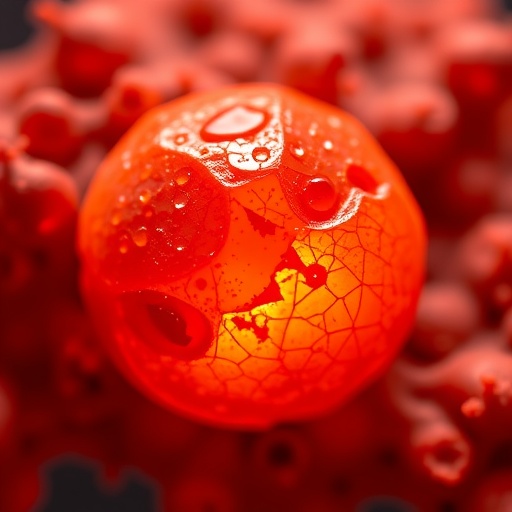
In recent years, the field of cancer research has made significant strides, yet a profound understanding of tumor dynamics remains elusive. Researchers are beginning to realize that the behavior of cancer cells is not solely dictated by their genetic mutations or malignant characteristics. Instead, the surrounding noncancerous cells, which form a complex network around tumors, significantly impact tumor biology and progression. This recognition is sparking a transformative perspective in cancer research, as scientists delve into the intricate interactions between different cell types within the tumor microenvironment.
A pivotal advancement in this arena is the introduction of the concept of the “colocatome,” a groundbreaking framework that highlights how various cell types, including noncancerous neighbors and their relationships, influence cancer development. The colocatome enables researchers to depict the spatial arrangements and interactions of these cells, akin to how the genome catalogues the genetic information of an organism. With this sophisticated approach, scientists are beginning to visualize the ‘social’ behavior of cells within tumors, providing a more nuanced picture of cancer ecosystems.
The colocatome emphasizes that not all tumor cells are created equal. It embraces the reality that diverse cell types—such as fibroblasts, immune cells, and endothelial cells—contribute to the biological narrative of cancer. Thus, the colocatome serves as a repository of knowledge detailing these interactions, akin to mapping a small city of various neighborhoods that may either bolster or hinder the tumor’s growth and resistance to therapy. This paradigm shift has the potential to redefine how we assess tumor aggressiveness and resistance to drugs, as the interactions between neighboring cells can profoundly influence these processes.
Scientists are particularly curious about how these noncancerous neighbors interact with cancer cells, shaping their survival and behavior. The colocatome captures these dynamics by performing rigorous imaging analyses to identify various cell types that occur in close spatial proximity. By comprehensively mapping their relationships within tumor environments, this framework allows researchers to answer fundamental questions regarding the cellular ‘peer pressure’ that cancer cells experience. Such insights not only deepen our understanding of tumor biology but also highlight new targets for therapeutic strategies.
In practical terms, the colocatome models developed by scientists can be visualized as an intricate tapestry woven together from countless data points describing the cellular interactions present in both experimental models and patient tissues. For instance, in an examination of lung cancer, the colocatome mapping revealed that the behavior of cancer cells was undeniably altered by the presence of fibroblasts—a type of connective tissue cell—suggesting that these fibroblasts could either support or challenge the tumor’s energies effectively.
Researchers observed an interesting phenomenon when exposing lung cancer cells to anti-tumor drugs in co-cultures with fibroblasts. While cancer cells were expected to succumb to the treatment, the presence of fibroblasts fundamentally changed the expected outcome. The spatial reorganization of these cells post-treatment indicated a shift towards drug-resistance, akin to rearranging the furniture in a room to block the exits. This remarkable observation raises critical considerations for developing treatment protocols that account for the cellular context in which cancer cells thrive.
As the team delves deeper into this research, their goal is to create a comprehensive catalog of cell arrangements and interactions that can explain the persistent nature of certain cancers after treatment. The colocatome holds potential for revolutionizing how oncologists approach therapeutic interventions. For instance, if specific colocalization patterns among noncancerous cells are tied to resistance against a standard treatment, clinicians might pivot to alternative therapies that take these cellular interactions into account.
This promising avenue of research also raises the possibility that certain spatial motifs—specific arrangements of cells that appear consistent across various tumors—could reveal fundamental rules that govern tumor behavior irrespective of cancer type or origin. By employing advanced artificial intelligence techniques alongside their imaging analyses, the researchers aim to identify these motifs across different cancers, opening potentially universal avenues for treatment and intervention.
Ultimately, the colocatome will facilitate the generation of data-driven hypotheses, pushing the boundaries of our understanding of cancer biology. By drawing parallels between spatially distinct cell arrangements and clinical outcomes, scientists can begin to decode how these interactions dictate tumor evolution, resistances and vulnerabilities. The commitment to deepening our understanding of these cellular interrelationships could lead to innovative therapeutic designs that better reflect the complexities of the tumor microenvironment.
These efforts signify a shift from a narrow focus on cancer cells alone to a broader perspective that includes noncancerous cells as essential players in the tumor ecosystem. By investing in research that maps these cellular interactions, we are poised to witness a transformative change in our approach to cancer treatment, paving the way for more tailored and effective interventions in oncology.
As researchers continue to refine their techniques and expand their datasets, the future of cancer therapy looks bright. The colocatome is not just a concept; it embodies a new understanding of what it means to study cancer by embracing the reality that even in the realm of cells, dynamics matter immensely.
In summary, with continued research and technological advancements, the potential exists to unravel the intricate interactions that shape tumor ecosystems. These insights will inform clinical decision-making, ultimately ensuring that patients receive the most informed and effective cancer treatments available.
Subject of Research: Cells
Article Title: A quantitative spatial cell-cell colocalizations framework enabling comparisons between in vitro assembloids and pathological specimens
News Publication Date: 6-Feb-2025
Web References: http://dx.doi.org/10.1038/s41467-024-55129-6
References: Nature Communications
Image Credits: Stanford Medicine
Keywords: Cancer cells, Biological models, Colocatome, Cell interactions, Tumor microenvironment, Drug resistance.
Tags: cancer cell behavior dynamicscancer research advancementscolocatome frameworkcomplex tumor biologydiverse cell types in cancerendothelial cells and cancer developmentfibroblasts and cancer progressionimmune cells role in tumorsnon-cancerous cell influence on cancerspatial cell arrangements in tumorstumor microenvironment interactionsunderstanding tumor ecosystems





